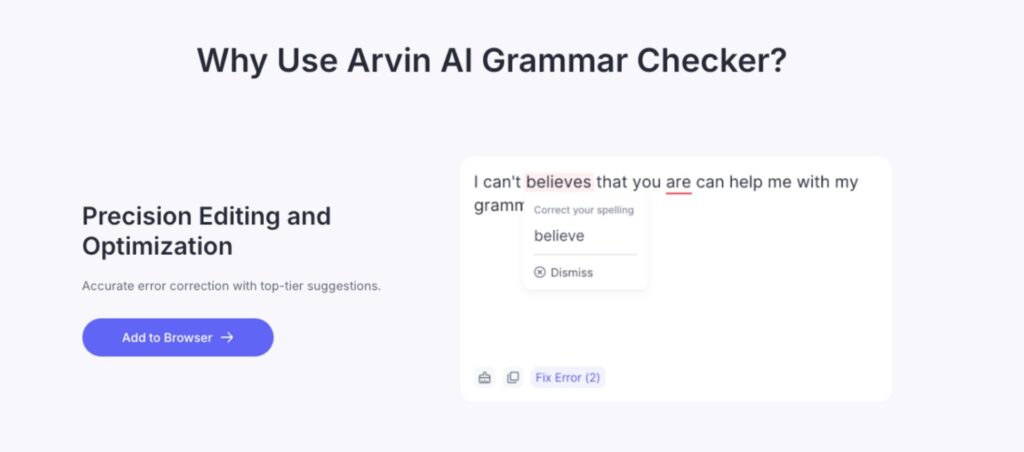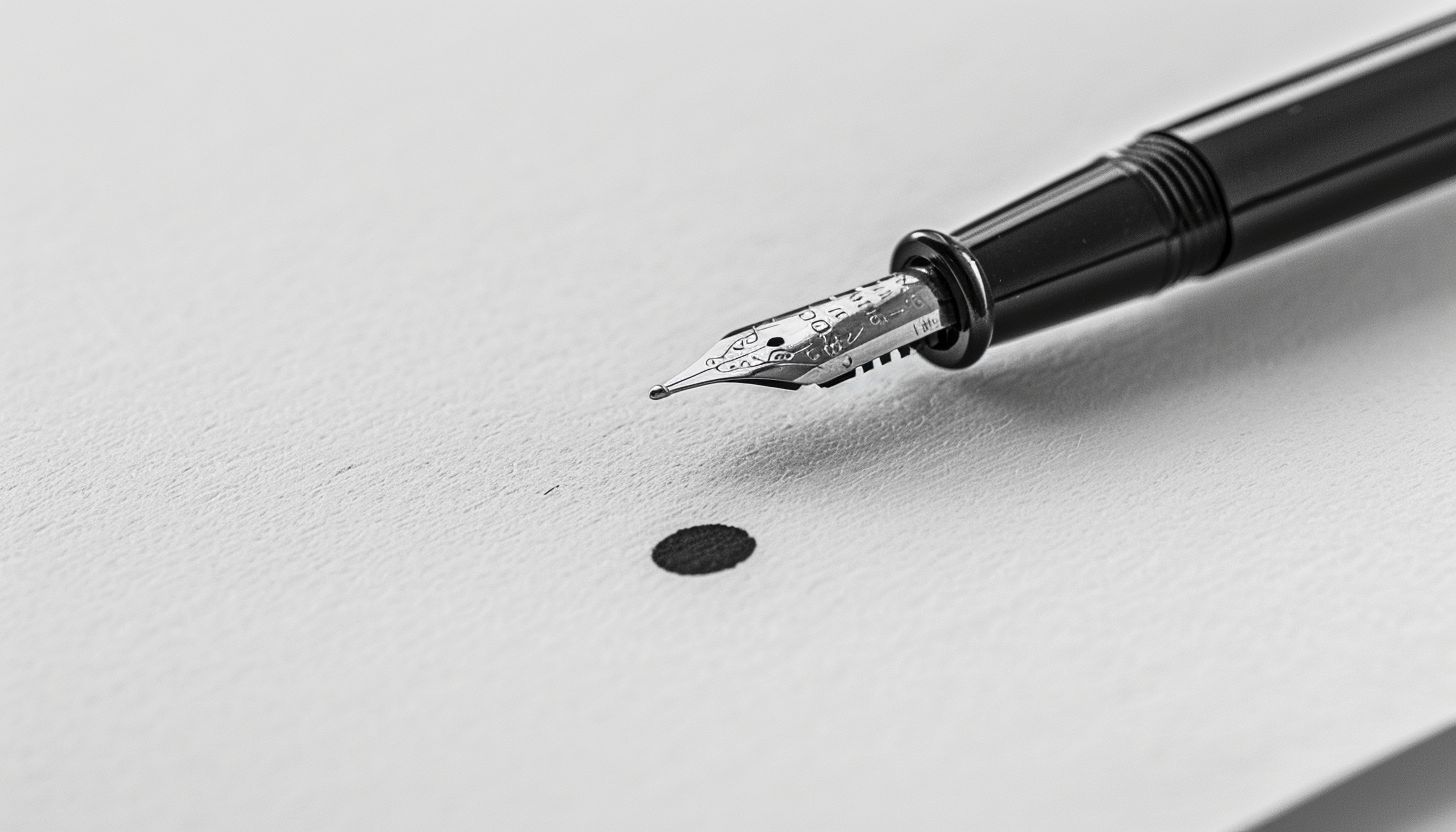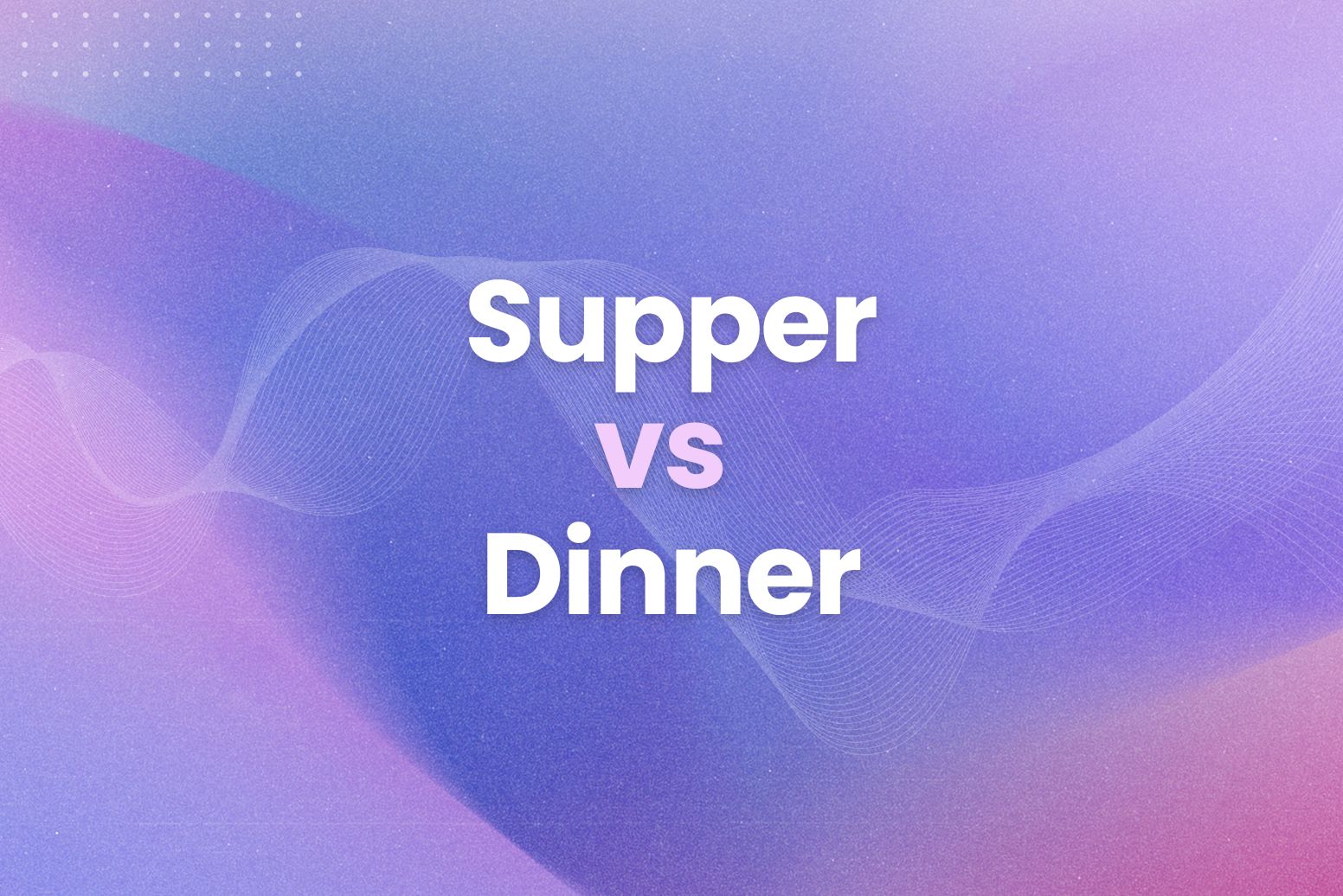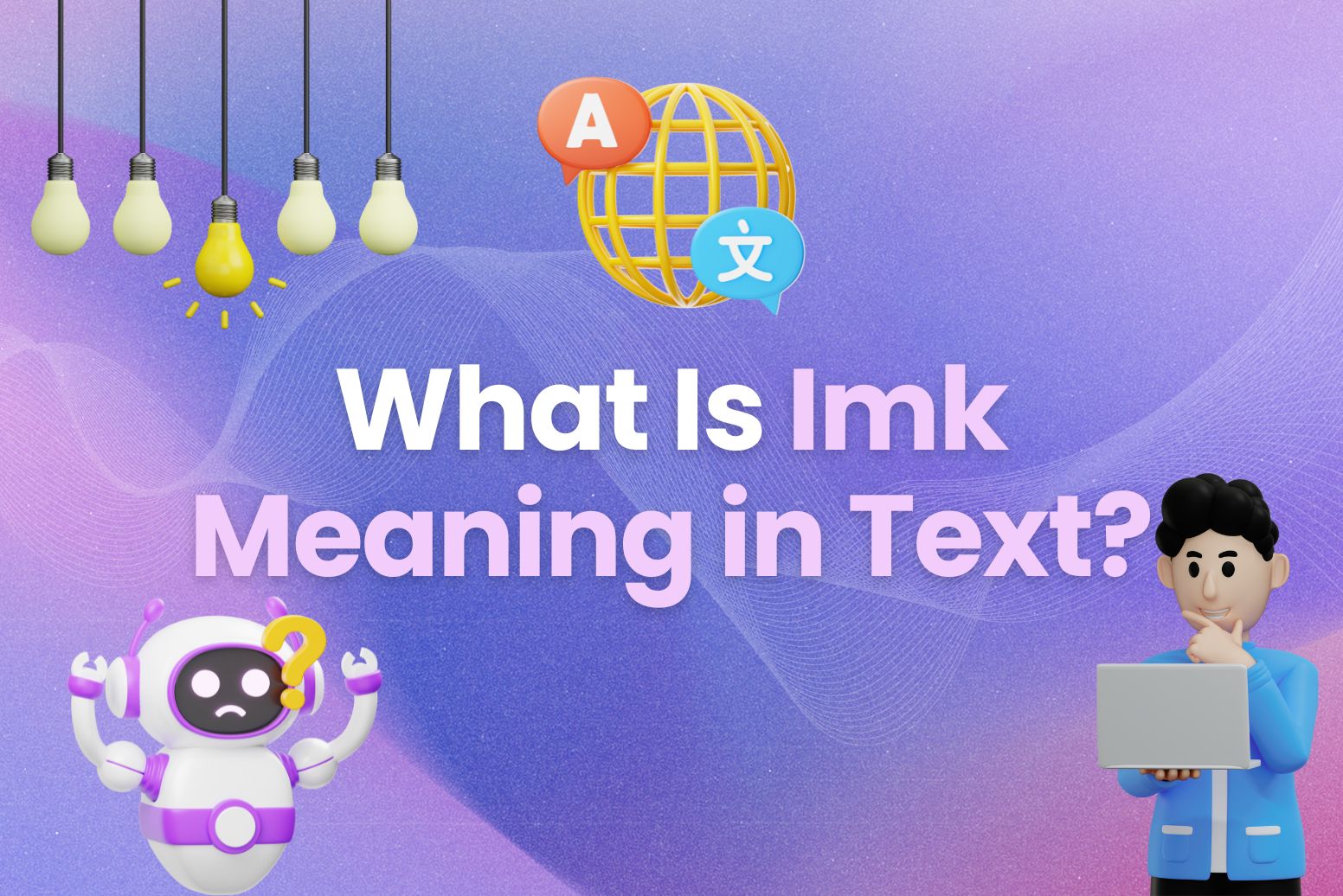The semicolon—often misunderstood and sometimes avoided—is a punctuation mark that can add clarity, sophistication, and balance to your writing. Knowing when to use semicolon can elevate your sentences, making them flow seamlessly while connecting closely related ideas.
But why does this tiny punctuation mark cause so much confusion? For many, semicolons seem intimidating or unnecessary, but the truth is, they’re incredibly versatile. Whether you’re linking two independent clauses, organizing complex lists, or emphasizing a point, the semicolon is the tool you didn’t know you needed.
Add polish to your writing with semicolons! Learn when and how to use them with Arvin AI’s Grammar Checker. Your readers will thank you!
What Is a Semicolon?
A semicolon (;) is a punctuation mark that works like a bridge, connecting closely related ideas while adding a polished, professional touch to your writing.
It’s stronger than a comma but less final than a period, making it perfect for specific situations.
When to Use a Semicolon?

1. To Link Closely Related Independent Clauses
Use a semicolon to join two complete sentences (independent clauses) that are closely related but don’t need a conjunction like and or but.
Example:
I started reading a new book; the plot hooked me instantly.
Why It Works:
This sentence connects two related thoughts without the need for an extra word like because. It shows that the ideas are connected but distinct.
2. Before a Conjunctive Adverb or Transitional Phrase
When connecting two sentences with words like however, therefore, moreover, meanwhile, or nevertheless, you should use a semicolon before the adverb and a comma after it.
Example:
I wanted to try the new restaurant; however, it was fully booked.
Connectors to Use:
- However, therefore, consequently, thus, meanwhile, hence, in contrast, as a result.
Why It Works:
The semicolon emphasizes the relationship between the two sentences while keeping them grammatically correct.
3. To Separate Complex Items in a List
When listing items that contain commas, semicolons help clarify the separation between items.
Example:
I’ve visited Paris, France; Kyoto, Japan; and Istanbul, Turkey.
Why It Works:
Without semicolons, the commas within the items could confuse the reader, making it hard to tell where one item ends and the next begins.
4. To Avoid Comma Overload
When your sentence has too many commas, semicolons can help organize the ideas and improve readability.
Example:
At the meeting, we discussed the budget, which needs revision; the timeline, which is too tight; and the next steps, which require approval.
Why It Works:
Using commas alone in this sentence would create confusion. Semicolons separate each thought clearly.
When to Use a Semicolon Examples
1. To Link Closely Related Independent Clauses
Semicolons connect two complete thoughts (independent clauses) that are closely related but don’t need a conjunction like and or but.
Example 1:
Beyoncé dropped a surprise album last night; the internet exploded with reactions.
Example 2:
Elon Musk announced a new Tesla feature; fans immediately started speculating about its potential.
2. Before a Conjunctive Adverb or Transitional Phrase
Use a semicolon before a transition like however, therefore, or meanwhile to connect two complete sentences.
Example 1:
I tried to book tickets to Taylor Swift’s Eras Tour; however, they sold out in minutes.
Example 2:
Zendaya walked the red carpet in a stunning gown; as a result, she trended on Twitter all night.
3. To Separate Items in a Complex List
When listing items that contain commas, semicolons clarify where one ends and the next begins.
Example 1:
The nominees for Best Actor included Timothée Chalamet, a rising star; Denzel Washington, a legend in the industry; and Pedro Pascal, a fan favorite.
Example 2:
On my bucket list are Kyoto, Japan; Santorini, Greece; and Queenstown, New Zealand.
4. To Avoid Comma Overload
Semicolons help untangle sentences with too many commas, ensuring readability and clarity.
Example 1:
At the Oscars, the highlights included Lady Gaga’s performance, which was breathtaking; Brendan Fraser’s win, which was emotional; and Michelle Yeoh’s speech, which was empowering.
Example 2:
The festival featured headliners like BTS, who brought the house down; Olivia Rodrigo, who debuted a new song; and The Weeknd, who closed the show in style.
5. To Add Sophistication and Variety
A semicolon adds elegance and rhythm to your writing, linking ideas seamlessly.
Example 1:
Emma Watson loves sustainability; her eco-friendly fashion choices always make headlines.
Example 2:
Some prefer Marvel movies; others swear by DC Comics.
Semicolons are easier than you think! Learn the rules and practice with confidence using Arvin AI’s Grammar Checker. Perfect punctuation is just a click away.
When to Use Semicolon vs Colon?
| Feature | Semicolon (;) | Colon (:) |
|---|
| Purpose | Links closely related independent clauses. | Introduces lists, quotes, explanations, or details. |
| Example for Independent Clauses | She loves hiking; he prefers staying home. | She has one true passion: hiking. |
| When to Use with a List | Separates items in a complex list (items with commas). | Introduces any list (simple or complex). |
| Example for Lists | I’ve traveled to Paris, France; Rome, Italy; and Tokyo, Japan. | Here are my favorite travel destinations: Paris, Rome, and Tokyo. |
| Use for Quotes or Explanations | Not used for this purpose. | Introduces quotes or explanations. Example: She said it best: “Keep moving forward.” |
| Relationship Between Ideas | Subtle connection or equal emphasis between two related thoughts. | Strong emphasis on the second part, drawing attention to what follows. |
| Example for Emphasis | I love late-night walks; they help me think clearly. | There’s one thing I know for sure: life is unpredictable. |
| Formality | Adds sophistication while keeping ideas separate but linked. | Highlights or announces important details or ideas. |
| Common Misuse | Used where a period or conjunction is needed (Wrong:Because I was tired; I stayed home.). | Used in place of a semicolon between clauses (Wrong: She loves cats: he loves dogs.). |
When to Use a Semicolon in a List?
1. Use a Semicolon When Items in the List Contain Commas
If the items in your list have their own commas, semicolons help avoid confusion by clearly separating the items.
Example:
At the conference, attendees included Sarah Lee, CEO of Innovatech; Tom Parker, CFO of TechPro; and Emily Davis, founder of GreenFuture.
- Without semicolons, it would be unclear where one name ends and the next begins.
2. Use a Semicolon to Separate Long or Complex Items
When list items are long or contain detailed descriptions, semicolons can simplify the structure and improve readability.
Example:
For our team retreat, we considered several locations: the mountains, for their serene environment; the beach, for its relaxing atmosphere and warm weather; and the city, for its vibrant activities and cultural experiences.
3. Use a Semicolon in Lists Introduced by a Colon
If your list is introduced by a colon, semicolons should be used if the items themselves are complex or contain commas.
Example:
The finalists in the competition were: Maria Gonzalez, a talented painter from Spain; Liam O’Connor, a sculptor known for his abstract designs; and Priya Patel, a photographer specializing in urban landscapes.
4. Use a Semicolon for Lists With Multiple Categories
Semicolons are perfect for lists where each item includes multiple categories or types of information.
Example:
Our top-performing employees this quarter are: Amanda White, Sales, $500,000 in revenue; Jason Brown, Marketing, 12 successful campaigns; and Emily Green, IT, 99.9% system uptime.
| Situation | When to Use a Semicolon |
|---|
| Items in the List Contain Commas | Use a semicolon to separate items when commas are already present within the items to avoid confusion. |
| Long or Complex Items | Use a semicolon to break up items that are lengthy or contain detailed descriptions. |
| Lists Introduced by a Colon | Use semicolons if the list is introduced by a colon and the items are detailed or contain commas. |
| Lists With Multiple Categories | Use semicolons to separate items where each includes multiple types of information or categories. |
| Simple Lists Without Commas | Don’t use semicolons. Use commas instead when items are short and straightforward. |
When to Use Semicolon vs Comma?
| Before Conjunctive Adverbs | Use a semicolon before a conjunctive adverb (however, therefore, meanwhile) when connecting two independent clauses. | Use a comma after the conjunctive adverb for clarity, but only when it doesn’t connect independent clauses. |
| Example: I wanted to go hiking; however, it started raining. | Example: However, I decided to stay indoors. |
| Between Dependent and Independent Clauses | Never use a semicolon. | Use a comma to separate a dependent clause from an independent clause. |
| Incorrect: Because I was late; I missed the bus. | Correct: Because I was late, I missed the bus. |
| In Place of a Comma | Use a semicolon to avoid confusion when commas are already present within clauses or phrases. | Use a comma for simpler separations or to introduce direct addresses, appositives, or interjections. |
| Example: The attendees included John, a manager; Sarah, a designer; and Emily, an engineer. | Example: Let’s eat, Grandma! |
What Is a Common Mistake When Using a Semicolon?
1. Using a Semicolon to Separate a Dependent Clause
A semicolon should never separate a dependent clause (incomplete thought) from an independent clause.
Incorrect:
Because I was late; I missed the bus.
Why It’s Wrong:
The first part (Because I was late) is a dependent clause and cannot stand alone as a complete sentence.
Correct Fixes:
- Because I was late, I missed the bus. (Use a comma.)
- I was late; therefore, I missed the bus. (Use a semicolon with a proper independent clause.)
2. Using a Semicolon to Separate Items in a Simple List
A semicolon is only needed in lists when the items themselves contain commas.
Incorrect:
I bought apples; oranges; bananas; and grapes.
Why It’s Wrong:
The list items are simple and don’t require additional separation.
Correct Fix:
I bought apples, oranges, bananas, and grapes.
When to Use a Semicolon:
I bought apples, which were on sale; oranges, which were freshly picked; and bananas, which were perfectly ripe.
3. Using a Semicolon Instead of a Colon
Semicolons should not be used to introduce a list, explanation, or quote.
Incorrect:
I have one goal; to finish my book by summer.
Why It’s Wrong:
A colon, not a semicolon, introduces an explanation.
Correct Fix:
I have one goal: to finish my book by summer.
4. Not Using Semicolons to Link Closely Related Independent Clauses
Sometimes, people mistakenly use a comma or nothing at all to link two independent clauses.
Incorrect:
I love reading, it helps me relax. (This is a comma splice.)
Why It’s Wrong:
A semicolon or conjunction is required to properly connect two independent clauses.
Correct Fixes:
- I love reading; it helps me relax. (Use a semicolon.)
- I love reading, and it helps me relax. (Use a comma with a conjunction.)
5. Overusing Semicolons
Using semicolons too often can make your writing feel overly formal, cluttered, or difficult to follow.
Example:
The movie was amazing; the cast was talented; the cinematography was stunning; the soundtrack was unforgettable.
Why It’s Wrong:
While grammatically correct, this sentence could overwhelm the reader.
Better Alternative:
The movie was amazing. The cast was talented, the cinematography was stunning, and the soundtrack was unforgettable.
Where Not to Use a Semicolon?
| Mistake | Why It’s Wrong | Correct Fix |
|---|---|---|
| Separating a dependent clause | Dependent clauses can’t stand alone. | Use a comma or restructure the sentence. |
| Using in simple lists | Simple lists don’t need semicolons. | Use commas unless the list is complex. |
| Replacing a colon | Semicolons don’t introduce lists or explanations. | Use a colon for lists, explanations, or quotes. |
| Not linking independent clauses properly | Two independent clauses need proper punctuation. | Use a semicolon or a comma with a conjunction. |
| Overusing semicolons | Too many semicolons make writing clunky. | Mix sentence structures for better readability. |
What Are Incorrect Examples of Colons?

1. Using a Colon After a Verb or Preposition
A colon should not directly follow a verb or preposition, as this disrupts the natural sentence flow.
Incorrect:
My favorite fruits are: apples, bananas, and oranges.
The book is about: courage, resilience, and love.
Why It’s Wrong:
The colon separates the verb (are, is about) from its object, breaking the sentence structure.
Correct Fixes:
- My favorite fruits are apples, bananas, and oranges.
- The book is about courage, resilience, and love.
Tip: Only use a colon after a complete sentence that introduces the list or explanation.
2. Using a Colon Between a Subject and Predicate
A colon should not interrupt the subject and its verb.
Incorrect:
The problem with his argument is: it lacks evidence.
Why It’s Wrong:
The subject (The problem with his argument) and the predicate (it lacks evidence) should remain connected without a colon.
Correct Fix:
The problem with his argument is that it lacks evidence.
3. Using a Colon Instead of a Semicolon or Comma
A colon should not replace a semicolon or a comma in connecting related clauses.
Incorrect:
I wanted to go to the park: but it started raining.
Why It’s Wrong:
Colons do not replace coordinating conjunctions (and, but, or), which require a comma or semicolon.
Correct Fixes:
- I wanted to go to the park, but it started raining. (Use a comma.)
- I wanted to go to the park; however, it started raining. (Use a semicolon.)
4. Using a Colon in Place of a Dash
Colons and dashes serve different purposes and should not be used interchangeably.
Incorrect:
He had one thought in mind: to escape—quickly and quietly.
Why It’s Wrong:
The colon suggests an introduction, while the dash adds emphasis or interruption.
Correct Fix:
He had one thought in mind—to escape quickly and quietly.
5. Using a Colon in Simple Lists Without a Complete Sentence
A colon should not precede a list unless the introduction is a complete sentence.
Incorrect:
The ingredients include: flour, sugar, and eggs.
Why It’s Wrong:
The phrase The ingredients include is not a complete sentence.
Correct Fix:
- The ingredients include flour, sugar, and eggs.
- Here are the ingredients: flour, sugar, and eggs.
6. Using a Colon Without an Explanation or List
A colon must introduce something specific, such as a list, quote, or explanation.
Incorrect:
She was surprised: but didn’t say a word.
Why It’s Wrong:
The second clause (but didn’t say a word) doesn’t serve as a list, explanation, or clarification.
Correct Fix:
- She was surprised but didn’t say a word.
Incorrect and Correct Uses of Colons
| Incorrect Use | Why It’s Wrong | Correct Fix |
|---|---|---|
| My favorite fruits are: apples, bananas. | Colon follows a verb, breaking sentence flow. | My favorite fruits are apples, bananas. |
| The problem is: it lacks evidence. | Colon splits subject and predicate. | The problem is that it lacks evidence. |
| I wanted to go to the park: but it rained. | Colon misused instead of a comma or semicolon. | I wanted to go to the park, but it rained. |
| The ingredients include: sugar, flour. | Introduction isn’t a complete sentence. | The ingredients include sugar, flour. |
| She was surprised: but didn’t react. | Second part isn’t a list, quote, or explanation. | She was surprised but didn’t react. |
When to Use a Dash?
A dash (—) is a versatile punctuation mark that adds emphasis, interruption, or additional information to your writing. It’s often used to create a dramatic pause, emphasize a point, or add clarity.
1. To Indicate a Sudden Break or Interruption
Use a dash to show a break in thought, an abrupt change, or an interruption in a sentence.
Example:
I was going to explain everything—but then I changed my mind.
- The dash creates a pause that emphasizes the unexpected turn.
Example in Dialogue:
“Wait—what are you doing?” she asked, startled.
2. To Emphasize a Key Point
Use a dash to set off an important or surprising element in a sentence.
Example:
There’s one thing I know for sure—success requires persistence.
- The dash draws attention to the final clause, emphasizing its importance.
Example:
Her greatest fear—losing her voice—was something she never spoke about.
3. To Replace Parentheses for Additional Information
Dashes can replace parentheses to add extra information or clarification, especially when you want to create a stronger emphasis.
Example:
The festival—known for its incredible live performances—drew thousands of attendees.
- Dashes make the additional information feel integral to the sentence.
With Parentheses for Comparison:
The festival (known for its incredible live performances) drew thousands of attendees.
- Parentheses downplay the additional detail.
4. To Indicate a Range or Connection
Use a dash to show a range of values, dates, or times.
Example:
The class is scheduled from 10:00 a.m.–12:00 p.m.
Example:
The World Wars (1914–1918 and 1939–1945) reshaped global history.
5. To Replace a Colon for Emphasis
A dash can replace a colon when introducing an explanation, a list, or a conclusion with more dramatic flair.
Example:
There’s only one thing standing in your way—fear.
- The dash adds a sense of immediacy and emphasis.
With a Colon for Comparison:
There’s only one thing standing in your way: fear.
- The colon is more formal and straightforward.
6. To Separate an Appositive for Emphasis
Use dashes to set off an appositive—a noun or phrase that explains or renames another noun—with extra emphasis.
Example:
Elon Musk—the entrepreneur behind Tesla and SpaceX—has a reputation for thinking big.
When NOT to Use a Dash
- In Formal Writing Where Colons or Parentheses Are Better:
Incorrect: She has one passion—photography.
Correct: She has one passion: photography. - To Replace Commas in Simple Lists:
Incorrect: I bought apples—bananas—grapes.
Correct: I bought apples, bananas, and grapes.
Dash vs. Other Punctuation
| Purpose | Dash (—) | Colon (:) | Parentheses ( ) |
|---|---|---|---|
| Emphasis | Adds dramatic emphasis or interruption. | Introduces lists or explanations. | Downplays additional information. |
| Break in Thought | Indicates a sudden change or pause. | Not used for interruptions. | Not used for interruptions. |
| Additional Information | Integrates details strongly into the sentence. | Introduces or separates with less flair. | Downplays extra information. |
When to Use a Comma?
A comma ( , ) is an essential punctuation mark that improves clarity, separates ideas, and organizes your sentences.
1. To Separate Items in a List
Use commas to separate three or more items in a series.
Example:
I bought apples, oranges, bananas, and grapes.
- The final comma (Oxford comma) before “and” is optional but recommended for clarity.
2. Before a Coordinating Conjunction in Compound Sentences
Use a comma before conjunctions like and, but, or, so, and yet when they join two independent clauses.
Example:
I wanted to stay home, but my friends convinced me to go out.
3. After Introductory Words, Phrases, or Clauses
Place a comma after introductory elements to set them apart from the main clause.
Examples:
- After the game, we went out for ice cream.
- Yes, I’ll join you for dinner.
4. To Set Off Nonessential Information
Use commas to enclose additional information that isn’t crucial to the main sentence.
Examples:
- My brother, who lives in Seattle, is visiting next week.
- The car, a shiny red convertible, sped down the highway.
5. To Separate Coordinating Adjectives
Use a comma between adjectives that independently describe a noun.
Example:
She wore a long, flowing dress to the party.
- Test: If you can insert and between the adjectives or reverse them, use a comma.
6. In Dates, Numbers, and Addresses
- Dates: The event is on March 15, 2025, in New York.
- Numbers: The company raised $2,000,000 in funding.
- Addresses: Please send the package to 456 Elm Street, Boston, MA 02110.
7. To Introduce Direct Quotes
Use a comma before a direct quote in a sentence.
Example:
She said, “I’m so excited for the vacation!”
8. To Separate Contrasting Elements
Use a comma to separate contrasting parts of a sentence.
Example:
I wanted tea, not coffee, this morning.
9. In Direct Address
Use a comma when addressing someone directly.
Example:
John, can you pass the salt?
10. To Avoid Ambiguity or Confusion
Use a comma to clarify the meaning of a sentence.
Example:
Let’s eat, Grandma! (versus Let’s eat Grandma!)
When NOT to Use a Comma
Between a Subject and a Verb:
Incorrect: My sister, loves singing.
Correct: My sister loves singing.
To Join Two Independent Clauses Without a Conjunction (Comma Splice):
Incorrect:I went to the store, I bought milk.
Correct:
- I went to the store, and I bought milk. (Use a conjunction.)
- I went to the store; I bought milk. (Use a semicolon.)
With Essential Information:
Incorrect: The man, who is wearing a blue hat, is my father.
Correct: The man who is wearing a blue hat is my father.
Final Words
Whether you’re separating independent clauses, organizing detailed lists, or emphasizing a point, the semicolon is your go-to for balance and clarity. But remember, moderation is key. Overusing semicolons can clutter your text, so use them sparingly and intentionally.
Now that you know the rules, it’s time to practice. Take a closer look at your next email, blog post, or creative piece and see where a semicolon might enhance your message.
Don’t let semicolons intimidate you.

Discover how this versatile punctuation mark can make your writing clearer and more professional. Start mastering semicolons today with Arvin AI’s Grammar Checker!
FAQ
A semicolon is used to connect closely related independent clauses, separate items in complex lists, or clarify sentences with too many commas.
You used a semicolon correctly if it connects two independent clauses without a conjunction or separates complex list items with commas. Test it: If both parts on either side of the semicolon could stand alone as complete sentences, it’s likely correct.
Semicolon (;) links closely related ideas or separates items in complex lists.
Example: I love reading; it helps me relax.
Colon (:) introduces a list, quote, or explanation.
Example: There’s only one thing left to do: relax.
To Link Closely Related Independent Clauses:
Example: She loves hiking; he prefers biking.
Before a Conjunctive Adverb:
Example: I wanted to join; however, I had another meeting.
To Separate Items in Complex Lists:
Example: I’ve traveled to Paris, France; Rome, Italy; and Kyoto, Japan.






